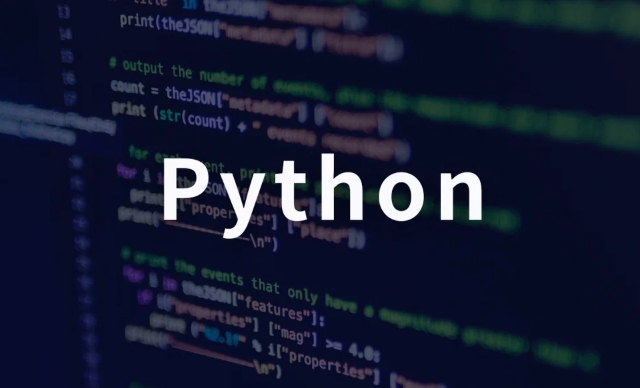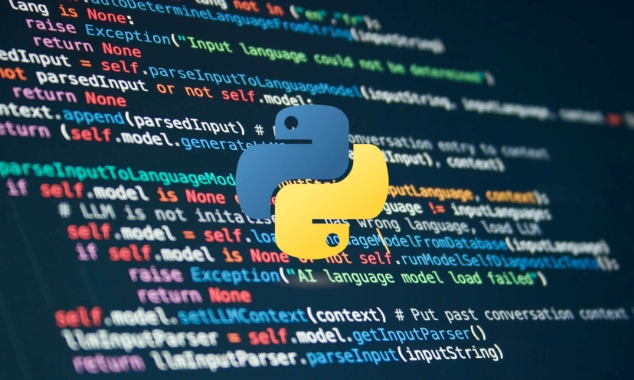Prometheus monitoring Python applications need to clarify the exposure metrics, configure the acquisition targets, and define the appropriate metric types. 1. Use the prometheus_client library to start HTTP server or register /metrics routes in the web framework to expose metrics; 2. Add jobs and targets in the Prometheus configuration file to ensure the network is accessible; 3. Define business metrics through Counter, Gauge, Histogram, etc. and use tag classification; it is also recommended to combine Grafana to achieve visual monitoring.

Monitoring Python applications is actually not that complicated. As a mainstream monitoring tool, Prometheus is also easy to use with Python. The key is to figure out how to expose indicators, how to collect data, and how to set alarms.

The following parts are the things you are most likely to care about:
How to expose Prometheus metrics in Python
To enable Prometheus to collect data, Python programs must first expose an HTTP interface to return metric content. The most commonly used library is prometheus_client .

You can install it first:
pip install prometheus_client
Then start an embedded HTTP server, which will expose metrics under the /metrics path by default:

from prometheus_client import start_http_server, Counter c = Counter('my_counter', 'Description of counter') c.inc() # Increasing the counter start_http_server(8000) # Start server on port 8000
In this way, you can see the output by visiting http://localhost:8000/metrics .
- If it is a web framework like Flask or Django, you can register a
/metricsroute to return the metrics. - For asynchronous applications (such as FastAPI), you need to pay attention to thread safety or use asynchronous middleware.
How to configure the acquisition target of Prometheus
With the metric interface, the next step is to add the collection target to the Prometheus configuration file.
The basic configuration looks like this:
scrape_configs:
- job_name: 'python-app'
static_configs:
- targets: ['localhost:8000']After saving, restart Prometheus, you can see whether the target is up on its UI page.
FAQ:
- The target address is written incorrectly, such as the port is incorrect or the host name is incorrect
- Firewall restricts access, causing connection timeout
- The app has no real exposure metrics, returns empty content or 404
If your application is deployed on Kubernetes, you can also automatically add targets through service discovery, but that is another topic.
How to define and use custom metrics
In addition to built-in Counter, Gauge, Histogram and other types, you often need to define business-related metrics yourself.
For example: You want to record the number of API requests and classify them by method:
from prometheus_client import Counter
api_requests_counter = Counter('api_requests_total', 'Total number of API requests by method', ['method'])
def handle_request(method):
api_requests_counter.labels(method=method).inc()In this way, the collected data will be labeled for easy grouping and aggregation.
- Counter is incremental and suitable for counting the total amount
- Gauge can be added or decreased, suitable for representing the current value, such as memory usage
- Histogram is used for distribution statistics, such as request delay time
Only when these indicator types are used correctly can they accurately reflect the system status.
A last suggestion
When I first started monitoring Python applications with Prometheus, I might feel that there were a lot of configurations, but in fact, as long as I straighten out these key links - exposing indicators, configuring and defining appropriate types of indicators, it will be much easier later.
Also, don't forget to use Grafana for visual display, which can see trends and abnormalities more intuitively.
Basically all that is, it's not difficult but there are many details.
The above is the detailed content of Monitoring Python Applications with Prometheus. For more information, please follow other related articles on the PHP Chinese website!

Hot AI Tools

Undress AI Tool
Undress images for free

Undresser.AI Undress
AI-powered app for creating realistic nude photos

AI Clothes Remover
Online AI tool for removing clothes from photos.

Clothoff.io
AI clothes remover

Video Face Swap
Swap faces in any video effortlessly with our completely free AI face swap tool!

Hot Article

Hot Tools

Notepad++7.3.1
Easy-to-use and free code editor

SublimeText3 Chinese version
Chinese version, very easy to use

Zend Studio 13.0.1
Powerful PHP integrated development environment

Dreamweaver CS6
Visual web development tools

SublimeText3 Mac version
God-level code editing software (SublimeText3)

Hot Topics
 Polymorphism in python classes
Jul 05, 2025 am 02:58 AM
Polymorphism in python classes
Jul 05, 2025 am 02:58 AM
Polymorphism is a core concept in Python object-oriented programming, referring to "one interface, multiple implementations", allowing for unified processing of different types of objects. 1. Polymorphism is implemented through method rewriting. Subclasses can redefine parent class methods. For example, the spoke() method of Animal class has different implementations in Dog and Cat subclasses. 2. The practical uses of polymorphism include simplifying the code structure and enhancing scalability, such as calling the draw() method uniformly in the graphical drawing program, or handling the common behavior of different characters in game development. 3. Python implementation polymorphism needs to satisfy: the parent class defines a method, and the child class overrides the method, but does not require inheritance of the same parent class. As long as the object implements the same method, this is called the "duck type". 4. Things to note include the maintenance
 Python Function Arguments and Parameters
Jul 04, 2025 am 03:26 AM
Python Function Arguments and Parameters
Jul 04, 2025 am 03:26 AM
Parameters are placeholders when defining a function, while arguments are specific values ??passed in when calling. 1. Position parameters need to be passed in order, and incorrect order will lead to errors in the result; 2. Keyword parameters are specified by parameter names, which can change the order and improve readability; 3. Default parameter values ??are assigned when defined to avoid duplicate code, but variable objects should be avoided as default values; 4. args and *kwargs can handle uncertain number of parameters and are suitable for general interfaces or decorators, but should be used with caution to maintain readability.
 Explain Python generators and iterators.
Jul 05, 2025 am 02:55 AM
Explain Python generators and iterators.
Jul 05, 2025 am 02:55 AM
Iterators are objects that implement __iter__() and __next__() methods. The generator is a simplified version of iterators, which automatically implement these methods through the yield keyword. 1. The iterator returns an element every time he calls next() and throws a StopIteration exception when there are no more elements. 2. The generator uses function definition to generate data on demand, saving memory and supporting infinite sequences. 3. Use iterators when processing existing sets, use a generator when dynamically generating big data or lazy evaluation, such as loading line by line when reading large files. Note: Iterable objects such as lists are not iterators. They need to be recreated after the iterator reaches its end, and the generator can only traverse it once.
 Python `@classmethod` decorator explained
Jul 04, 2025 am 03:26 AM
Python `@classmethod` decorator explained
Jul 04, 2025 am 03:26 AM
A class method is a method defined in Python through the @classmethod decorator. Its first parameter is the class itself (cls), which is used to access or modify the class state. It can be called through a class or instance, which affects the entire class rather than a specific instance; for example, in the Person class, the show_count() method counts the number of objects created; when defining a class method, you need to use the @classmethod decorator and name the first parameter cls, such as the change_var(new_value) method to modify class variables; the class method is different from the instance method (self parameter) and static method (no automatic parameters), and is suitable for factory methods, alternative constructors, and management of class variables. Common uses include:
 How to handle API authentication in Python
Jul 13, 2025 am 02:22 AM
How to handle API authentication in Python
Jul 13, 2025 am 02:22 AM
The key to dealing with API authentication is to understand and use the authentication method correctly. 1. APIKey is the simplest authentication method, usually placed in the request header or URL parameters; 2. BasicAuth uses username and password for Base64 encoding transmission, which is suitable for internal systems; 3. OAuth2 needs to obtain the token first through client_id and client_secret, and then bring the BearerToken in the request header; 4. In order to deal with the token expiration, the token management class can be encapsulated and automatically refreshed the token; in short, selecting the appropriate method according to the document and safely storing the key information is the key.
 What are Python magic methods or dunder methods?
Jul 04, 2025 am 03:20 AM
What are Python magic methods or dunder methods?
Jul 04, 2025 am 03:20 AM
Python's magicmethods (or dunder methods) are special methods used to define the behavior of objects, which start and end with a double underscore. 1. They enable objects to respond to built-in operations, such as addition, comparison, string representation, etc.; 2. Common use cases include object initialization and representation (__init__, __repr__, __str__), arithmetic operations (__add__, __sub__, __mul__) and comparison operations (__eq__, ___lt__); 3. When using it, make sure that their behavior meets expectations. For example, __repr__ should return expressions of refactorable objects, and arithmetic methods should return new instances; 4. Overuse or confusing things should be avoided.
 How does Python memory management work?
Jul 04, 2025 am 03:26 AM
How does Python memory management work?
Jul 04, 2025 am 03:26 AM
Pythonmanagesmemoryautomaticallyusingreferencecountingandagarbagecollector.Referencecountingtrackshowmanyvariablesrefertoanobject,andwhenthecountreacheszero,thememoryisfreed.However,itcannothandlecircularreferences,wheretwoobjectsrefertoeachotherbuta
 Describe Python garbage collection in Python.
Jul 03, 2025 am 02:07 AM
Describe Python garbage collection in Python.
Jul 03, 2025 am 02:07 AM
Python's garbage collection mechanism automatically manages memory through reference counting and periodic garbage collection. Its core method is reference counting, which immediately releases memory when the number of references of an object is zero; but it cannot handle circular references, so a garbage collection module (gc) is introduced to detect and clean the loop. Garbage collection is usually triggered when the reference count decreases during program operation, the allocation and release difference exceeds the threshold, or when gc.collect() is called manually. Users can turn off automatic recycling through gc.disable(), manually execute gc.collect(), and adjust thresholds to achieve control through gc.set_threshold(). Not all objects participate in loop recycling. If objects that do not contain references are processed by reference counting, it is built-in






